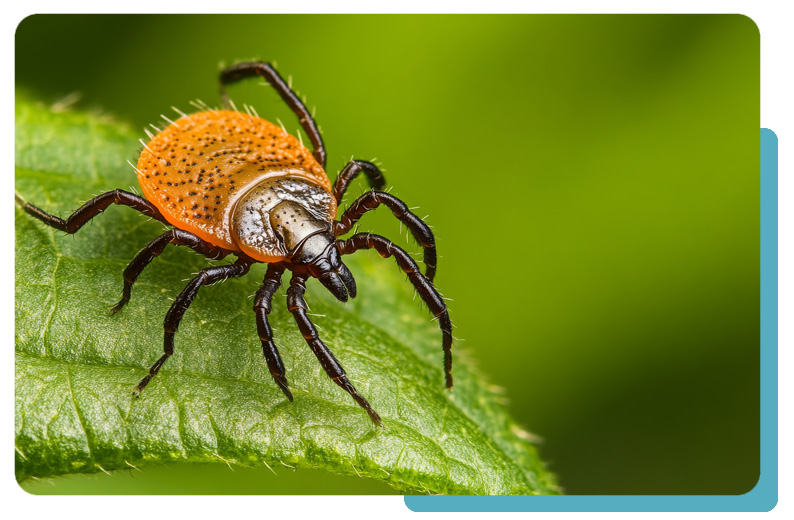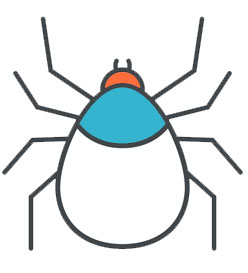
What is Babesiosis?
Babesiosis is a tick-borne disease caused by an infection with Babesia, a malaria-like parasite, also called a “piroplasm,” that infects red blood cells. In healthy individuals, the illness can be mild or even asymptomatic. However, babesiosis can become severe or life-threatening in people with weakened immune systems, the elderly, or those without a spleen.
Often called the “American malaria,” babesiosis causes symptoms similar to malaria, including fever, chills, fatigue and anemia. But while malaria is spread by mosquitoes, Babesia is transmitted by ticks, especially the blacklegged (deer) tick found in the U.S.
Once considered rare, babesiosis is now one of the most common tick-borne infections — second only to Lyme disease in many regions. As awareness grows and diagnostic testing improves, more cases are being identified each year. Today, babesiosis is recognized as an emerging public health threat, particularly in areas where Lyme disease is already prevalent.
Once mostly confined to the Northeast and upper Midwest, babesiosis is now considered endemic in at least 10 states including Maine, Vermont, and New Hampshire, where it was once rare. Cases are also emerging in states like Pennsylvania, New Jersey, Maryland, and parts of California.
The number of babesiosis cases is skyrocketing – particularly across the Northeastern United States. Between 2011 and 2019, reported cases in Vermont increased by an astonishing 1,602%, while Maine saw a 1,422% rise, and New Hampshire experienced a 372% jump in diagnoses.

The rise is alarming since many people with babesiosis show no symptoms and can unknowingly spread the infection through blood transfusions. And, in some people, especially those who are older or have weakened immune systems — the disease can cause severe, sometimes fatal complications.
Babesiosis is on the rise in the US

How Do You Get Babesiosis?
Babesiosis is usually spread through the bite of a blacklegged tick (Ixodes scapularis) or the western blacklegged tick (Ixodes pacificus) infected with Babesia. These are the same ticks that can carry Lyme disease. In Europe, the primary tick species that transmits Babesia is Ixodes ricinus, also known as the sheep tick or castor bean tick.
Several types of Babesia parasites can cause babesiosis. In the U.S., Babesia microti is the most common species that infects humans. Other species that can cause illness in people include Babesia duncani, Babesia divergens and Babesia venatorum.
While tick bites are the most common way people get babesiosis, it can also be transmitted through:
- Contaminated blood transfusions (from an infected donor)
- During organ transplants
- From mother to fetus during pregnancy1

Note: Blood donor screening for Babesia microti (one of many species) is currently required in the following states: Connecticut, Delaware, Maine, Maryland, Massachusetts, Minnesota, New Hampshire, New Jersey, New York, Pennsylvania, Rhode Island, Vermont, Virginia, Wisconsin, and Washington, DC.
Types of Babesia
Although over a hundred species of Babesia have been identified worldwide, only a handful are known to infect humans. These microscopic parasites vary by region, severity, and response to treatment—making species identification important for accurate diagnosis and care. The main human-infecting species include Babesia duncani, Babesia microti, Babesia divergens, and Babesia venatorum, each with distinct geographic patterns and clinical features.

Babesia duncani
Once thought to be limited to the West Coast, Babesia duncani is now appearing in other regions of the United States. Like B. microti, it infects red blood cells and causes malaria-like symptoms such as fever, chills, fatigue, sweats, and muscle aches. However, B. duncani may lead to more severe or prolonged illness, especially in people without a spleen or with weakened immune systems. Because it often evades standard blood tests, antibody and PCR testing through specialized labs are the most reliable ways to detect it.

Babesia microti
Babesia microti is the primary cause of babesiosis in the U.S., especially in the Northeast and Upper Midwest. The parasite invades red blood cells and can cause fever, chills, and muscle aches, though many infections go unnoticed or are mistaken for other illnesses. Transmitted mainly by tick bites, B. microti can also spread through blood transfusions, organ transplants, or from mother to baby during pregnancy.

European Babesia Species
Outside North America, Babesia divergens and Babesia venatorum are the main humaninfecting species, found mostly in Europe and parts of Asia. Transmitted by the castor bean tick (Ixodes ricinus), B. divergens can cause sudden, severe infections in people without a spleen, while B. venatorum generally produces milder symptoms but can be more serious in those who are immunocompromised.
Note: The information presented on this page has been reviewed and approved by a member of our Medical Leadership Board.
Take the first step towards understanding tick-borne disease with an exclusive guide to something here, all backed by world-leading science.

More Lyme Basics
Learn More
Ticks are tiny parasites that feed on the blood of their hosts (humans and animals) in order to survive and advance to the next life cycle stage. Most ticks have four stages: egg, larva, nymph and adult. The larva and nymph need a blood meal to move to the next stage. Ticks are extremely small, with the nymph the size of a pinhead.
Learn More
Learn More



